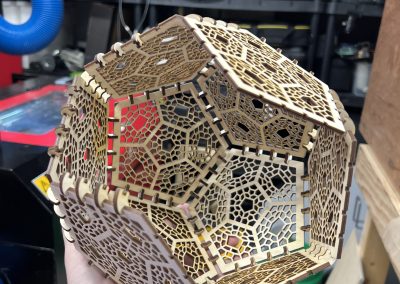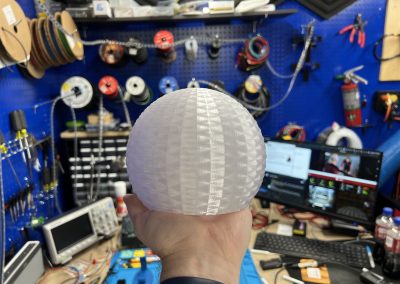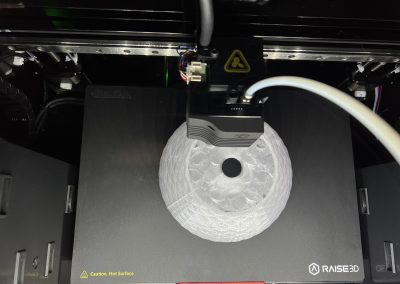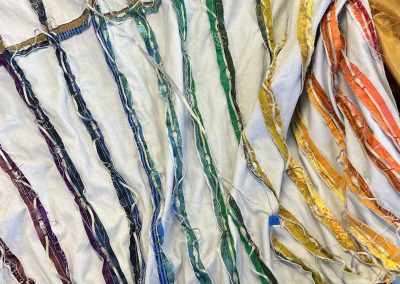July of 2022 was a busy time for the Utah Festival Opera & Musical Theatre (UFOMT) in Logan, Utah; four shows opened simultaneously in the Eccles Theatre, including ‘Joseph and the Amazing Technicolor Dreamcoat’, ‘Carmen’, ‘Man of La Mancha’, and ‘The Magic Flute’. “All four premiered the same week and rehearsed at the same time; we had between 90min to two hours to change over between productions,” reports Lighting Designer Chris Wood.
Due to the quick turnover, “Everything that we put lighting into had to be completely untethered — it had to be extremely easy to move,” Wood notes. So, he turned to one of his favorite tools: RC4 Wireless dimmers and transceivers. He adds, “It’s easy to use; in fact, it’s pretty much plug and play.”
Wood used 470 LED pixels to illuminate Joseph’s amazing technicolor coat. “Amanda Profaizer was the costume designer; she designed the coat look itself. The team and I worked closely with the costume shop and Meg Merhar — who draped the coat — to find a good way to assemble it in terms of where we were going to put the electronics and the batteries. We collaborated with them intensely in terms of finding a good place for the battery packs to fit so it would be comfortable on the actor when he was wearing it,” says Wood.
Finding the right place for the battery pack was a challenge. He continues: “We had to keep in mind that Joseph had to dance in the coat and it had to take a beating from the brothers. Too high and the electronics hit the shoulder blades, it’s awkward and looks like a bump back there. If you go too low, the weight gets oddly distributed when he stands and the coat doesn’t flare out like it’s supposed to.” The solution was from Merhar. “It ended up just a little above the small of the back, between the small of the back and the shoulder blades,” Wood notes.
The coat also included animations, designed by Wood. “The coat itself needed 3 universes of data, but we only sent it two. In the DMXpix we replicated the data. We used a DXio transmitter with the DMXpix as the pixel driver; we had two of them inside the coat,” he reports.
The Joseph set also included LEDs. “We built into the set 1720 LED pixels that reacted with the coat visually. All the animations that went across the pixels on the coat also went across the background as well,” explains Wood.
Joseph also included four Dodecahedrons. “We custom-made them; they had large 50-watt LEDs built in. We laser cut them out of Baltic birch plywood, so when you shined a light out of them, it created all these cool shafts of light in the haze,” the lighting designer notes.
The dodecahedrons appeared in the song Close Every Door. Wood explains: “The children’s chorus came in to greet Joseph, and they carried the four dodecahedrons that were glowing. There was ground fog, it was dark, he was in jail and at the emotional point in the song where the bass drops there was this big push, all the stage lights went out and these four dodecahedrons turned on at full. You saw shafts of light coming out, and then they slowly fade out at the resolve of the music.”
For the wireless dodecahedrons, Wood used the RC4 DMX2microXB. “It just came out this summer; it’s a 2-channel dimmer that is extremely small, and really low profile, and that’s what we needed,” he says.
Having a two-channel dimmer was critical to the success of the prop. “We needed to have one channel to dim the LED and the other dimmer allowed it to turn on a cooling fan. Because the LED was so powerful, it would melt itself if you didn’t actively cool it. That two-channel dimmer gave us the ability to turn it on and keep it from destroying itself. We were pushing the limits of what we were doing in the time that we had,” Wood admits.
In the Magic Flute, the Magic Flute Dress designed by Jennifer Sheshko Wood. “For Joseph’s coat, we had to make it in a way that you had no idea LEDs were in the coat until they turned on. While in the Queen of the Night’s dress, we were not as worried about the pixels being seen, because they’re on the whole time she’s on the stage. There was no big magic reveal of the LEDs; there was sheer fabric over LED pixels so they shined through the fabric,” says Wood.
“The costume designer for that was Jennifer Sheshko Wood,” says Wood. “She wanted to have this energy, of the stars and the aura and all that stuff in the costume, so there are multiple layers. It was basically the same technology—we had an RC4 DMXpix built into it; there were 500 RGB LEDs that we only used in white.”
The Queen’s dress also included animations. Wood continues: “We were able to make it react to what the opera singer was doing; we could make the animations of the costume react to her mood.”
The Queen also used an LED-infused dagger. “We put 32 RGB Pixels in it and depending on her mood, the blade of the dagger would react to what she was doing.” The prop also changed colors according to who was holding it. “The dagger used the new DMXpixMicro; the size of the DMXpixMicro allowed us to fit it and the battery into the hilt of the dagger,” explains Wood. More information on the DMXpixMicro and the DMX2microXB can be found on the RC4 YouTube page.
As for the new DMXpixMicro, Wood notes, “The DMXpix units are extremely powerful; if you have 1000 LED pixels you need to control but you only have one universe of data, the Micro or regular unit will replicate that data for you internally, so you can control a thousand pixels with one universe easily.”
The Magic Flute also included two different types of Flute Orbs. Wood reports: “We had 3 spirit orbs that were 3D printed with translucent filament and we put an RC4 DMXpix and 50 RGB LED pixels in each one to make animations and swirls and flashing and static in these magical orbs on the stage. I used PETG for my filament; it was translucent, strong, and could handle high temps. We were sending animations to the spirit orbs, so it was more like a handheld video device with extremely low resolution.”
Overhead, there were “another 19 orbs that were flown over the stage, they are similar to the spirit orbs,” says Wood. “Ten were pixel based and 9 were regular LEDs. They were hung on a batton suspended with fire line, which is a thin carbon fiber filament. That’s why we wanted to be wireless, we didn’t see the wires coming down, we wanted them to be floating orbs. Putting the battery inside and the DMXpix units, with that fire line, they just magically floated out there. We use the DMXio as the transmitter; the 10-pixel spirit orbs were DMXpix units,” he concludes.
Wood has been working with RC4 equipment since 2008 and has worked with the firm’s gear on countless productions. “They have fantastic customer support. They have a lot of great knowledge base articles on their website that can walk you through any question, they have tutorials online that walk you through how to use a device, and if you contact tech support, they will get your question figured out pretty quickly.”



